Home> Company News> Ball Bearing Plummer Block Units: The Cornerstones of Industrial Stability
- AddressTianqiao, Beiyuan District, Jinan,Shandong
- Worktime9:00-18:00(Beijing time)
- Phone(Working Time)0531-8299 9953
In the realm of industrial machinery, the foundation of stability and reliability lies in the unassuming yet crucial components known as ball bearing plummer block units. These unassuming units are the unsung heroes, ensuring that machinery functions smoothly and efficiently. we will delve into the world of ball bearing plummer block units, exploring their significance and the pivotal role they play in maintaining industrial stability.
Design and Components
- Explaining the design features and components of ball bearing plummer block units
- Highlighting the importance of each element in achieving stability
Ball bearing plummer block units are engineered with precision and ingenuity to provide the stability required in industrial applications. At their core, these units consist of two main components: the plummer block and the ball bearing itself. The plummer block, often made from cast iron or steel, serves as the housing for the bearing. Its robust and durable construction ensures the bearing remains secure and stable, even in demanding environments.
Within the plummer block, the ball bearing takes center stage. These bearings are designed to handle radial and axial loads, making them suitable for a wide range of industrial applications. The design of the ball bearing allows for smooth rotation, minimizing friction and reducing wear and tear on the machinery.
Additionally, various seals and lubrication systems are integrated into the design to further enhance the performance and lifespan of these units. Proper sealing prevents contaminants from entering the bearing, while effective lubrication ensures smooth operation and minimizes heat generation.
Understanding the intricacies of the design and components of ball bearing plummer block units is essential for grasping their role in industrial stability.
Applications Across Industries
- Showcasing the diverse range of industries and applications that rely on ball bearing plummer block units
- Real-world examples of how these units enhance stability and performance
Ball bearing plummer block units find their applications across a multitude of industries, contributing significantly to the stability and reliability of various machinery. Let's explore some of the key sectors where these units play a pivotal role.
Manufacturing: In manufacturing industries, such as automotive and aerospace, precision and stability are paramount. Ball bearing plummer block units are employed in assembly line machinery, ensuring consistent and reliable performance.
Agriculture: Farming equipment, including tractors and harvesters, relies on these units to withstand the rigors of outdoor conditions and heavy workloads, ensuring smooth operations during planting and harvesting seasons.
Material Handling: Conveyor systems, used in logistics and distribution centers, employ ball bearing plummer block units to maintain continuous material flow and reduce downtime.
Mining: In the mining industry, where heavy loads and harsh environments are common, these units are essential for the reliable operation of crushers, conveyors, and ore processing equipment.
Construction: Cranes, excavators, and other construction machinery benefit from the stability provided by ball bearing plummer block units, contributing to safer and more efficient building processes.
Energy: Power generation facilities, including wind turbines and hydroelectric plants, rely on these units to ensure consistent energy production.
In each of these industries, the application of ball bearing plummer block units ensures that machinery operates smoothly, reducing downtime, increasing productivity, and ultimately contributing to industrial stability.
Advantages and Benefits
- Enumerating the advantages of incorporating ball bearing plummer block units
- How these units improve machinery stability, reduce downtime, and enhance efficiency
The utilization of ball bearing plummer block units offers a plethora of advantages and benefits that are integral to the smooth operation of industrial machinery. Let's delve into some of these key advantages:
Stability and Precision: These units provide exceptional stability and precision, reducing vibrations and ensuring machinery operates with the utmost accuracy.
Reduced Downtime: With their robust design and ability to handle heavy loads, ball bearing plummer block units minimize downtime, leading to increased productivity and cost savings.
Extended Lifespan: Properly maintained units have a longer lifespan, reducing the need for frequent replacements and associated costs.
Versatility: They can be used in various machinery types and across multiple industries, making them a versatile solution for diverse applications.
Ease of Installation: Ball bearing plummer block units are designed for straightforward installation, saving time and labor during setup.
Minimal Maintenance: Regular maintenance is simple and efficient, ensuring the units continue to perform optimally.
By incorporating these units into industrial machinery, companies can achieve improved stability, reliability, and efficiency, leading to enhanced overall performance and profitability.
In the world of industrial machinery, where stability and reliability are paramount, ball bearing plummer block units stand as the cornerstones of industrial stability. These unassuming components play a pivotal role in ensuring that machinery functions smoothly and efficiently. In this article, we will delve into the design and components of ball bearing plummer block units, shedding light on their significance and how each element contributes to achieving industrial stability.

Design and Components
Ball bearing plummer block units are engineered with precision and ingenuity to provide the stability required in industrial applications. At their core, these units consist of two main components: the plummer block and the ball bearing itself. Let's explore these elements in detail and understand their critical role in maintaining machinery stability.
|
Plummer Block |
The plummer block, often constructed from cast iron or steel, serves as the housing for the ball bearing. Its robust and durable design ensures the bearing remains secure and stable, even in demanding environments. The plummer block's primary function is to provide a sturdy and protective enclosure for the bearing, preventing contaminants from entering and causing damage. |
|
Ball Bearing |
The heart of the ball bearing plummer block unit is, undoubtedly, the ball bearing itself. These bearings are specifically designed to handle both radial and axial loads, making them suitable for a wide range of industrial applications. The design of the ball bearing allows for smooth and precise rotation, minimizing friction and reducing wear and tear on the machinery. This characteristic is crucial for maintaining accuracy and efficiency in various industrial processes. |
|
Seals and Lubrication |
To further enhance performance and prolong the lifespan of these units, various sealing mechanisms and lubrication systems are integrated into the design. Proper sealing prevents contaminants such as dust and moisture from entering the bearing, ensuring it operates in a clean environment. Effective lubrication reduces friction and heat generation, promoting smooth operation and extending the life of the bearing. |
Understanding the intricacies of the design and components of ball bearing plummer block units is essential for grasping their role in industrial stability. These units are not mere components but rather precision-engineered solutions that contribute significantly to the smooth operation of industrial machinery.
Applications Across Industries
Ball bearing plummer block units are versatile components that find applications across a wide range of industries, contributing significantly to industrial stability and performance. we will explore the diverse industries and applications where these units play a pivotal role, showcasing real-world examples of their importance.
Manufacturing Industry: The manufacturing sector relies heavily on precision machinery for various processes, such as conveyor systems, assembly lines, and material handling equipment. Ball bearing plummer block units are used in these applications to ensure smooth and reliable operation, reducing downtime and enhancing productivity. For instance, in automotive manufacturing, these units support conveyor systems, ensuring the efficient movement of vehicles along the assembly line.
Mining and Construction: Harsh and demanding environments, such as those found in mining and construction, require robust and durable components. Ball bearing plummer block units are employed in heavy machinery like crushers, conveyor belts, and excavators. Their ability to withstand heavy loads and provide stability in challenging conditions makes them indispensable in these industries.
Agriculture: Agriculture machinery, including tractors, combines, and plows, must operate efficiently in rugged outdoor environments. Ball bearing plummer block units are used in the wheels, axles, and power transmission systems of these machines, ensuring reliable performance during planting, harvesting, and other agricultural tasks.
Food and Beverage Industry: In food processing and packaging, hygiene and precision are paramount. Ball bearing plummer block units are utilized in conveyor systems, bottling machines, and packaging equipment. Their corrosion-resistant materials and smooth operation are essential for maintaining the quality and safety of food products.
Renewable Energy: The renewable energy sector, including wind turbines and solar panel tracking systems, relies on ball bearing plummer block units to facilitate the rotation and movement of equipment. These units help harness clean energy efficiently while withstanding exposure to harsh weather conditions.
Aerospace and Defense: Aerospace applications demand components that meet stringent quality and performance standards. Ball bearing plummer block units find use in aircraft landing gear, radar systems, and missile launchers, where their reliability and precision are critical for mission success.
Textile Industry: In textile manufacturing, where precision and speed are essential, ball bearing plummer block units are incorporated into spinning machines, looms, and other textile equipment. They contribute to the seamless production of fabrics and textiles.
These are just a few examples of the diverse industries that benefit from the reliability and stability provided by ball bearing plummer block units. Their ability to endure heavy loads, harsh environments, and continuous operation makes them indispensable in various applications. As we continue to explore their advantages and benefits, it becomes evident that these units are indeed the cornerstones of industrial stability across the board.
Advantages and Benefits
Ball bearing plummer block units are the unsung heroes of industrial machinery, providing a multitude of advantages that significantly impact stability, reliability, and efficiency. we will explore and enumerate the key advantages of incorporating these units into various industrial applications.
Exceptional Load-Bearing Capacity: One of the standout features of ball bearing plummer block units is their remarkable load-bearing capacity. They can support heavy loads with ease, making them ideal for applications involving substantial machinery and equipment.
Enhanced Machinery Stability: The stability of industrial machinery is crucial for safe and efficient operations. Ball bearing plummer block units contribute to this stability by providing precise alignment and support, reducing vibrations and minimizing the risk of equipment malfunction.
Reduced Downtime: Downtime in industrial settings can result in substantial losses. These units offer smooth and reliable performance, which translates to fewer breakdowns and maintenance requirements. Reduced downtime means increased productivity and cost savings.
Improved Efficiency: Efficiency is the cornerstone of any industrial process. Ball bearing plummer block units ensure smooth and friction-free movement, optimizing the performance of conveyor systems, conveyor belts, and other machinery. This improved efficiency directly translates into higher production rates.
Corrosion Resistance: In environments where exposure to moisture, chemicals, or harsh elements is a concern, these units excel. Many variants come with corrosion-resistant coatings or materials, ensuring longevity and durability even in challenging conditions.
Easy Installation and Maintenance: The design of ball bearing plummer block units facilitates straightforward installation, reducing setup time and costs. Additionally, their modular construction makes maintenance and replacement of components hassle-free.
Versatility Across Industries: These units find applications across various industries, from manufacturing and mining to agriculture and renewable energy. Their versatility underscores their adaptability to diverse industrial needs.
Longevity and Reliability: Ball bearing plummer block units are engineered to last, even in demanding environments. Their robust construction and high-quality materials ensure prolonged service life, minimizing the need for frequent replacements.
Cost-Effective Solution: While the initial investment in ball bearing plummer block units may be slightly higher than alternatives, their long-term benefits more than justify the cost. Reduced maintenance, enhanced efficiency, and prolonged lifespan result in substantial cost savings over time.
Precision and Accuracy: These units provide the precision and accuracy required for critical industrial processes. Whether in manufacturing or aerospace applications, their consistent performance contributes to high-quality output.
Incorporating ball bearing plummer block units into industrial machinery is more than just a choice; it's a strategic decision to ensure stability, reliability, and efficiency. The advantages they offer extend across a wide spectrum of industries, underlining their significance as the cornerstones of industrial stability. As we delve deeper into their applications and real-world examples, the importance of these units becomes even more apparent.
Selection and Installation
Selecting and installing ball bearing plummer block units is a crucial step in ensuring optimal stability and performance in industrial machinery. we will delve into the key factors to consider when choosing these units and the best practices for their installation.
Load Requirements: The first consideration when selecting ball bearing plummer block units is the load they will bear. It's essential to determine the maximum load capacity required for your specific machinery. Overloading the units can lead to premature wear and reduced lifespan.
Bearing Type: There are various types of ball bearing plummer block units available, each designed for specific applications. These include pillow block units, flanged units, and take-up units. Choosing the right type is crucial for proper fit and functionality.
Shaft Size and Speed: Ensure that the shaft size matches the specifications of the bearing unit. Additionally, consider the rotational speed requirements of your machinery to select bearings that can handle the anticipated speeds.
Sealing and Lubrication: Protection against contaminants and adequate lubrication are essential for bearing longevity. Choose units with effective sealing mechanisms to prevent dust, moisture, and debris from entering. Proper lubrication ensures smooth operation and reduces friction.
Environmental Conditions: Assess the environmental conditions in which the machinery operates. Factors like temperature extremes, exposure to chemicals, and moisture levels can impact the choice of materials and coatings for the bearing units.
Alignment and Mounting: Correct alignment and mounting are critical for the performance of ball bearing plummer block units. Improper alignment can lead to premature wear, vibration, and reduced stability. Follow manufacturer guidelines for alignment and ensure a secure mounting process.
Maintenance Practices: Implement a proactive maintenance schedule to inspect and lubricate the units regularly. Proper maintenance ensures that the bearings continue to perform optimally throughout their lifespan.
Training and Expertise: Ensure that the personnel responsible for the selection and installation of ball bearing plummer block units are adequately trained and experienced. This reduces the likelihood of errors during the installation process.
Compatibility: Ensure that the selected units are compatible with other components in your machinery, such as housings, shafts, and seals. Compatibility issues can lead to operational problems and reduced stability.
Manufacturer Recommendations: Always refer to the manufacturer's recommendations and guidelines for selecting and installing ball bearing plummer block units. Manufacturers often provide detailed information specific to their products.
By carefully considering these factors and following best practices during the selection and installation process, you can maximize the stability and performance of your industrial machinery. Ball bearing plummer block units, when chosen and installed correctly, become the cornerstones of industrial stability, providing reliable support for critical applications.
Maintenance and Troubleshooting
Maintenance and troubleshooting play a vital role in ensuring the longevity and optimal performance of ball bearing plummer block units. we will explore essential guidelines for proper maintenance and how to address common issues that may arise during the lifespan of these units.
Regular Maintenance:
Regular maintenance is the cornerstone of ensuring that ball bearing plummer block units continue to function efficiently throughout their operational life. Here are some key maintenance practices:
|
Lubrication |
Adequate lubrication is essential to reduce friction, prevent wear, and maintain smooth operation. Follow the manufacturer's recommendations for the type and quantity of lubricant. Regularly check and replenish lubrication as needed. |
|
Inspection |
Conduct regular visual inspections to identify any signs of wear, damage, or misalignment. Look for indications such as unusual noise, vibrations, or heat. Early detection of issues can prevent further damage. |
|
Cleaning |
Keep the units clean and free from contaminants, such as dust and debris. Dirty or contaminated bearings can lead to premature failure. Use appropriate cleaning agents and methods recommended by the manufacturer. |
|
Alignment |
Ensure that the units are correctly aligned with the shaft and other components. Misalignment can lead to uneven load distribution and increased stress on the bearings. Correct any misalignment promptly. |
|
Temperature Monitoring |
Monitor the operating temperature of the units. Abnormal temperature spikes can be an indication of issues such as insufficient lubrication or excessive friction. Investigate and address the root cause of temperature anomalies |
Troubleshooting:
Despite proactive maintenance, issues may still arise with ball bearing plummer block units. Here are common problems and troubleshooting steps:
Noise and Vibration: Unusual noise or excessive vibration can indicate misalignment, damaged components, or inadequate lubrication. Inspect the units for these issues and take corrective actions.
Overheating: Overheating can be caused by excessive friction, lack of lubrication, or incorrect alignment. Address the root cause, and ensure proper lubrication and alignment.
Seal Damage: Damaged seals can allow contaminants to enter the bearing, leading to premature wear. Replace damaged seals promptly and maintain effective sealing.
Reduced Performance: If you notice a reduction in the performance of your machinery, it could be due to worn-out bearings. Replace worn bearings with new ones according to the manufacturer's specifications.
Bearing Failure: In the event of bearing failure, it's essential to investigate the cause, which could range from overloading to misapplication. Replace the failed bearings and implement corrective measures.
Consult Manufacturer Guidelines: Whenever troubleshooting or performing maintenance, refer to the manufacturer's guidelines and recommendations specific to the ball bearing plummer block units you are using.
By adhering to proper maintenance practices and promptly addressing any troubleshooting issues, you can ensure the continued stability and reliability of your industrial machinery. Ball bearing plummer block units, as the cornerstones of industrial stability, require proactive care to fulfill their role effectively.
Future Trends and Innovations
As we continue to rely on ball bearing plummer block units as the cornerstones of industrial stability, it's essential to explore the latest developments and innovations in this field. Emerging technologies are shaping the future of these units, with profound implications for industrial stability and reliability. we delve into the exciting advancements and trends that are reshaping the landscape of ball bearing plummer block units.
Smart and Condition-Monitoring Bearings:
One of the most notable trends in ball bearing plummer block units is the integration of smart and condition-monitoring technologies. These units are now equipped with sensors and data analytics capabilities that allow real-time monitoring of their performance. By collecting data on factors such as temperature, vibration, and load, these smart units can predict maintenance needs and identify potential issues before they lead to failures. This proactive approach to maintenance reduces downtime and ensures continuous industrial stability.
Improved Materials and Coatings:
Advancements in materials science have led to the development of high-performance materials and coatings for ball bearing plummer block units. These innovations enhance the units' resistance to wear, corrosion, and extreme operating conditions. Improved materials extend the lifespan of the units and contribute to their overall reliability.
Enhanced Lubrication Systems:
Proper lubrication is crucial for the smooth operation of ball bearing plummer block units. Recent innovations have focused on enhancing lubrication systems to ensure optimal performance. Self-lubricating units and advanced lubricants reduce the need for frequent manual maintenance, making these units even more reliable and easier to manage.
3D Printing and Customization:
Additive manufacturing, particularly 3D printing, has opened up new possibilities for customizing ball bearing plummer block units. Manufacturers can now produce units with intricate designs tailored to specific applications. This customization results in units that are more efficient and better suited to handle unique industrial challenges.
Sustainability and Environmental Considerations:
In line with global sustainability efforts, there is a growing emphasis on producing environmentally friendly ball bearing plummer block units. Manufacturers are developing units that are more energy-efficient, produce fewer emissions, and have a smaller environmental footprint. Sustainability not only benefits the environment but also contributes to long-term industrial stability by aligning with regulatory requirements and reducing operational costs.
Integration with Industrial IoT (IIoT):
The Industrial Internet of Things (IIoT) is becoming increasingly prevalent in the industrial landscape. Ball bearing plummer block units are now designed to seamlessly integrate with IIoT platforms, enabling real-time data exchange and remote monitoring. This connectivity allows for better decision-making, predictive maintenance, and improved overall stability in industrial operations.
Collaborative Research and Development:
Collaboration between manufacturers, research institutions, and industry experts is driving innovation in ball bearing plummer block units. Joint research projects are focused on solving complex challenges and pushing the boundaries of what these units can achieve. This collaborative approach ensures that the units remain at the forefront of industrial stability.
In conclusion, the future of ball bearing plummer block units is filled with promise and innovation. As these units continue to evolve and adapt to emerging technologies and trends, they will play an even more pivotal role as the cornerstones of industrial stability. Staying informed about these developments will be essential for industries that rely on the reliability and performance of ball bearing plummer block units.

FAQs: Common Questions About Ball Bearing Plummer Block Units
we will address some common questions and concerns about ball bearing plummer block units. These frequently asked questions provide valuable insights into the key aspects of these units, their applications, and their role in maintaining industrial stability.
What are ball bearing plummer block units, and how do they work?
Ball bearing plummer block units are a type of bearing assembly used to support rotating shafts in industrial machinery. They consist of a housing (plummer block), a bearing (typically a ball bearing), and often an adapter sleeve. The housing provides a secure mounting for the bearing, which contains rolling elements (balls) that reduce friction and enable smooth shaft rotation. The adapter sleeve facilitates easy installation on the shaft.
Where are ball bearing plummer block units commonly used?
These units find widespread use in various industries, including manufacturing, mining, agriculture, and construction. They are employed in applications such as conveyor systems, conveyor pulleys, fans, pumps, and other machinery requiring stable and reliable shaft support.
What are the advantages of using ball bearing plummer block units?
Ball bearing plummer block units offer several advantages, including:
- Excellent load-carrying capacity
- Easy installation and maintenance
- High levels of precision and stability
- Resistance to contamination and harsh environmental conditions
- Long service life
How do I select the right ball bearing plummer block unit for my application?
Selecting the appropriate unit involves considering factors such as load capacity, speed, shaft size, operating temperature, and environmental conditions. It's essential to consult with a knowledgeable supplier or engineer to ensure the right choice for your specific needs.
What maintenance practices should I follow for ball bearing plummer block units?
Proper maintenance is crucial to maximize the lifespan and performance of these units. Regular lubrication, routine inspections for wear or damage, and timely replacement of worn components are key practices. Maintenance schedules may vary depending on the application and operating conditions.
What are some common issues or challenges associated with ball bearing plummer block units?
Common challenges include contamination by dust or debris, insufficient lubrication, misalignment, and overloading. Regular maintenance and adherence to recommended operating conditions can mitigate these issues.
Can ball bearing plummer block units be replaced or upgraded easily?
Yes, these units are designed for ease of replacement and can often be upgraded to newer models with improved features or materials. Consult with your supplier for guidance on suitable replacements or upgrades.
Are there environmentally friendly options for ball bearing plummer block units?
Yes, manufacturers are increasingly offering environmentally friendly options with reduced friction, energy-efficient designs, and materials that are compliant with environmental regulations.
In conclusion, ball bearing plummer block units are integral components in maintaining industrial stability across various sectors. By addressing common questions and concerns, we hope to enhance your understanding of these units and their significance in industrial machinery. If you have more specific questions or require assistance with your unique application, do not hesitate to reach out to experts in the field for guidance.


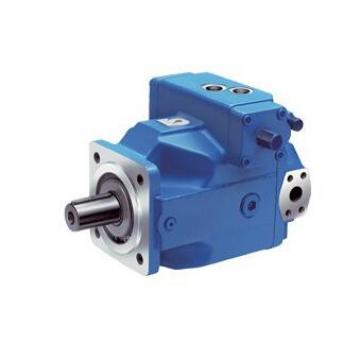 USA VICKERS Pump PVH131R13AF30B252000002001AB010A
USA VICKERS Pump PVH131R13AF30B252000002001AB010A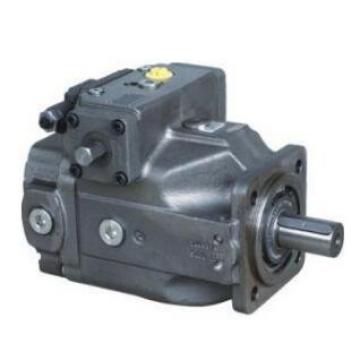 Parker Piston Pump 400481002108 PV140R1K1B4NWLZ+PGP517A0
Parker Piston Pump 400481002108 PV140R1K1B4NWLZ+PGP517A0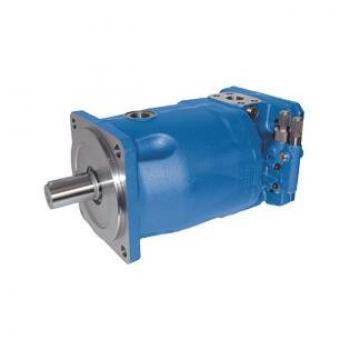 Parker Piston Pump 400481003286 PV180R1K1A4NYCD+PGP511A0
Parker Piston Pump 400481003286 PV180R1K1A4NYCD+PGP511A0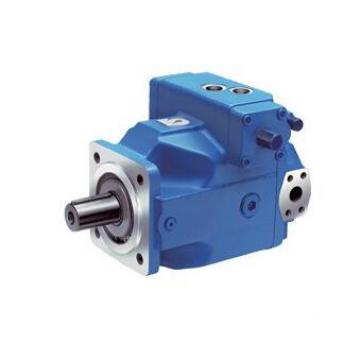 USA VICKERS Pump PVH057R02AA10B25200000100100010A
USA VICKERS Pump PVH057R02AA10B25200000100100010A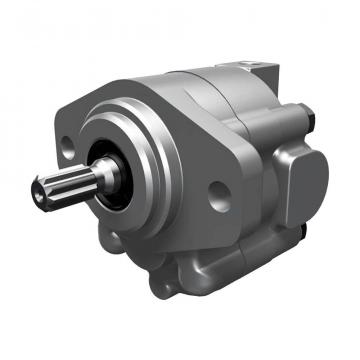 Parker Piston Pump 400481004166 PV270R9K1B4NYLZK0033+PVA
Parker Piston Pump 400481004166 PV270R9K1B4NYLZK0033+PVA